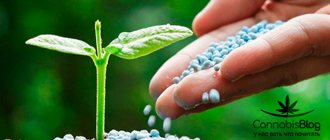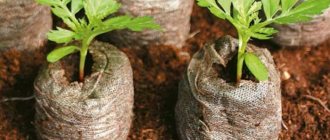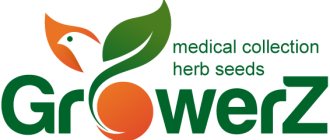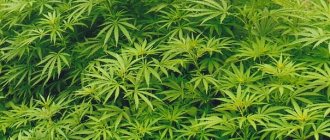Not long ago, the Russian government allowed the cultivation of industrial hemp for industrial needs. This is a profitable area for business, since it is just gaining momentum and has almost no competition. Let's consider what varieties are allowed to be grown, what is necessary from the legal side, and what kind of profit is possible from the product.
1. How hemp is grown in Russia 2. What can be made using industrial hemp 3. How hemp is used in China 4. What to do with the harvest in the Russian Federation 5. How to register correctly 6. Documents for peasant farms 7. Documents for growing special crops 8. What you will need equipment 9. Where to start in practice 10. How much hemp producers earn
How is hemp grown in Russia?
For a long time, marijuana was prohibited for cultivation in the Russian Federation, since a convention adopted in 1961 was in force. She completely limited the cultivation of the crop due to its narcotic properties.
Recently, the State Drug Control Committee made a proposal to grow industrial hemp, which does not contain intoxicating substances. The discussion in the Duma ended with the adoption of the law, and varieties suitable for processing for industrial purposes have now been approved. The same law now allows the cultivation of the sleeping pill poppy.
An important condition is that the stems, leaves and cones contain tetrahydrocannabinol (THC) in an amount of less than 0.1%. It is this substance that is intoxicating. For example, in Indian hemp it reaches 30%. It is important to be careful when purchasing so as not to accidentally grow another species. You can buy the seeds you need for planting from licensed farms that sell them as individual entrepreneurs or LLCs.
In order to be guaranteed not to have problems with the law, it is recommended to grow the “Surskaya” variety, bred by the Research Institute of Agriculture. It contains no more than 0.056% THC. This plant is officially approved by the government of our country and is of no interest to drug addicts, since it does not have an intoxicating effect. This means that such fields will not be subject to looting and theft of culture. When choosing seeds, do not buy weed hemp. There are no dangerous substances in it, but there are no useful ones either.
Growing industrial hemp
However, residents of the southern regions should be careful, since as the ambient temperature rises, the THC content in the plant also increases. In this case, it is better to first contact your local licensing authority and find out which varieties are suitable for the southern climate.
To grow industrial hemp in Russia, a fenced area is required, the possibility of monitoring it and security (watchmen, dogs) is desirable. It will take time for local drug addicts to try it and realize that the variety is of no interest to them.
LiveInternetLiveInternet
Quote from Vedma_ELENA message
Read in full In your quotation book or community!
Hemp was one of the main agricultural crops of the USSR. It was used for wide purposes, as a spinning, food and medicinal plant. They made paper, clothes, shoes, threads, ropes from it... Remember the “Friendship of Peoples” fountain at VDNKh? In the center of the sheaf are hemp leaves.
For a long time, hemp was one of the main agricultural crops of the Russian Empire, and later of the USSR. At the end of the 19th century, growing hemp was one of the main incomes of peasants in the Oryol, Kaluga, Kursk, Chernigov, Mogilev and partly Minsk provinces. According to the Brockhaus and Efron Encyclopedia, in the European part of Russia at the end of the 19th century, about 140 thousand tons of hemp were produced, which accounted for about 40% of hemp production in Europe. According to TSB data, the production of hemp fiber from hemp in the USSR reached in 1934-35. — 44.9 thousand tons; production of hemp oil (from seeds) in the USSR in 1934. amounted to 6.3 thousand tons. Hemp crops in the USSR in 1936 occupied 680 thousand hectares, accounting for 4/5 of the entire world area under hemp. It is not for nothing that the creators of the “Friendship of Peoples” fountain at VDNKh, the country’s main fountain, built in 1954, placed hemp leaves along with ears of wheat and sunflower inflorescences in the center of a sparkling golden sheaf. druzhba-1.jpg At different times, governments of different countries have taken measures to encourage the cultivation of hemp. So in our country, on December 13, 1715, Peter I issued a “Decree on the expansion of flax and hemp crops,” and in March 1934, a Resolution of the Council of People's Commissars of the USSR and the Central Committee of the All-Union Communist Party of Bolsheviks was adopted, which for the cultivation of hemp on estates, household plots and floodplains lands were provided with special benefits and advantages. As Barashev and Vasilkevich write in their article: “Hemp is again the most popular raw material for medical, food, cosmetic, textile, light, paper, construction, aviation, fuel and other industries... In total, according to foreign literature, from industrial and narcotic hemp up to 25 thousand types of products can be manufactured. Or you can not make anything out of it at all, just plant it on contaminated soil, and the hemp will suck out heavy metals from there, and neither zinc nor lead will interfere with the growth of hemp. This is a great way to reclaim a dump.” It turns out that hemp is used to produce: * ropes, cables, twine, threads, yarn, fabric; * sails and ship's tackle; * paper, including tissue and copy paper, paper for banknotes, documents and that which is used to make tea bags (hemp fibers are a valuable material for the production of premium paper due to their outstanding strength and ability to split into the finest fibrils); * clothes: from underwear to windbreakers and sneakers; * “car internals” (one BMW car uses 5 kg of hemp fiber); * building materials - bricks from kostra (hemp wood base), cement fiber boards, * linoleum (hemp oil is used as a raw material); * fuel from fires; * bedding for pets and livestock, cat litter; * insulating materials; * bird food - from seeds. Hemp seeds are a favorite delicacy of tits, siskins, goldfinches and other granivorous birds. Birds fed hemp seeds live much longer; * livestock feed - from cake; * oil - for food and as a basis for the production of drying oils, varnishes, paints; * cosmetics: soaps and creams with hemp extract; * mats; * wicks for candles; * technical textiles: drive belts, fire hoses, parachute lines, harnesses, nets, bow strings; * food products, from seed porridge (similar to oatmeal) to chips, cookies, candies and ice cream (Hemp Ice Cream with hemp oil and hulled hemp seeds is made in England). Hemp seeds contain the same amount of protein as soybeans and are easy to digest. In addition, they contain all the amino and fatty acids necessary for humans. One handful of hemp seeds contains the daily amount of protein and fat for a normal adult; * drinks: Czech vodka Cannabis, Swiss whiskey Canna Williams, German beer Cannabia and sodas CannaCola and CannaLime; * medications (including medications for leukemia, epilepsy, asthma, glaucoma, cancer, multiple sclerosis, depression, even AIDS, and many other diseases). Pharmacological raw materials can now be obtained in sufficient quantities only from narcotic hemp containing 5-15% THC. Hemp is also an effective and cheap biofuel. In addition, hemp converts carbon dioxide into oxygen very quickly. It absorbs carbon dioxide three to four times faster than deciduous trees. It turns out: The first paper made in China was made from hemp. The German pioneer Johannes Gutenberg printed his first “Bible” on hemp paper. The first US Constitution and Declaration of Independence were also printed on hemp paper. Until the end of the 19th century, hemp was used to make paper for books, maps, and textbooks. The first US flag was sewn from hemp fabric, and the first ever Levi Strauss jeans were sewn in 1853. Rembrandt and Van Gogh created their works on hemp canvases. Until 1937, high-quality paints were made from hemp oil. The first car produced by Henry Ford was designed to run on hemp fuel, and many parts of this car were made using hemp. Until the beginning of the twentieth century, street lamps in Moscow and other large cities were fueled with hemp oil. There are several Hemp Museums in the world, they are located in Holland, Germany, France and Japan. In Russia there are also exhibitions dedicated to this wonderful plant, the largest of which (according to Internet sources) is located in the Museum-Reserve of Folk Architecture in Kizhi. Yes, the village of Konoplevka, neighboring and closest to Palatki (Opakov), can rightfully be proud of its name. Why did they so abruptly stop growing hemp, which was one of the most important components of Russian agriculture and industry, in the 60s of the 20th century? The thing is that it was during these years that almost all countries and continents were swept by a “drug addiction epidemic.” The medicinal - sleeping pills and sedatives - and narcotic properties of cannabis have been known since ancient times. Several types of drugs can be made from hemp. Smoking hashish, one of the most dangerous drugs, was widespread in the East. This is what N. Reznik writes in his article: “The peoples of Rus' did not do this, although they were literally surrounded by hemp, because in a temperate and cold climate this plant almost completely loses its narcotic properties. But south of the forty-fifth parallel, under the fertile hot sun, Indian Hemp (Cannabis indica) grows, which synthesizes and accumulates psychoactive substances in its leaves and seeds - cannabinoids, including tetrahydrocannabinol (THC) - a resinous substance that causes euphoria in humans, which serves as raw material for popular drugs (marijuana, hashish).” The concentration of this dangerous substance in Indian Hemp is approximately 20 times higher than in Common Hemp (Seed), which was cultivated in Russia. “Until the beginning of the 20th century, certain segments of the population in the countries of Southeast Asia indulged in drugs made from hemp, as they say. Raw materials for this need were grown in small plots, excluded from their cultural circulation. But then the plots could no longer satisfy the needs of the growing army of drug addicts, and the producers of hashish and marijuana turned to industrial crops of cultivated hemp, not only in Asia, but also in the European part, even within 50-60o northern latitude, straining meager crumbs from the plants THC. To stop the growth of drug addiction, the UN Single Convention of 1961 included hemp in the list of narcotic plants and obliged the governments of the participating countries to strictly control it, as a result of which crops are currently significantly reduced. In 1961, the USSR ratified the UN Convention on Narcotic Drugs. According to the Convention, the cannabis plant, along with heroin, is declared a dangerous drug that has no practical value, and it is ordered to be destroyed in every possible way. The governments of many countries simply banned the cultivation of hemp, since by that time there was no longer any urgent need for it. It was replaced by cotton, tropical coarse fiber crops (for example, jute) and synthetic materials. But in the USSR, where hemp crops occupied 700-900 thousand hectares every year, and the state’s capabilities were great, they took a different path.” The Soviet government set breeders the task of creating varieties of hemp that do not have narcotic properties. This was the only opportunity to preserve the most valuable culture and at the same time one of the measures to combat the spread of drug addiction. And as a result of almost 20 years of work by breeders of the Institute of Bast Crops in the city of Glukhov (Ukraine) under the leadership of Professor G.I. Senchenko, which has no analogues in the world selection, created drug-free and high-yielding varieties of hemp (with a THC content of no more than 0.1%), zoned for the Poltava and Cherkassy, Sumy, Oryol and Penza regions, Kabardino-Balkaria and North Ossetia. The unique varieties of Glukhov selection received worldwide recognition, thanks to them, Canada lifted the ban on hemp cultivation in 1998, and in our country the hemp industry collapsed and is still slowly dying, including due to the collapse of the Soviet Union, due to many bureaucratic obstacles and strict requirements for crop protection. The “List of narcotic drugs and psychotropic substances, the circulation of which in the Russian Federation is prohibited in accordance with the legislation of the Russian Federation and international treaties of the Russian Federation (list I)”, approved by Decree of the Government of the Russian Federation of June 30, 1998 N 681, indicates the following narcotic drugs, made from hemp: Cannabis (marijuana) and Cannabis oil (hashish oil). Currently, in Russia, the cultivation of hemp is limited by Articles 228 and 231 of the “CRIMINAL CODE OF THE RUSSIAN FEDERATION” (Criminal Code of the Russian Federation) dated June 13, 1996 N 63-FZ (adopted by the State Duma of the Federal Assembly of the Russian Federation on May 24, 1996), according to which for the illegal cultivation of plants on a large scale, containing narcotic drugs or psychotropic substances, shall be punished with imprisonment for up to two years; If a group of persons is engaged in growing hemp by prior conspiracy and on an especially large scale, then the penalty is imprisonment for a term of three to eight years, with or without restriction of freedom for a term of up to two years. In his article, N. Reznik further reports that there are now more than 200 different companies and organizations in the world that research, cultivate and process hemp. This culture is again becoming in demand in the world. But, unfortunately, not yet in our country. If several decades ago the annual crops of industrial hemp in the USSR occupied 700-900 thousand hectares, then by 2000 they amounted to only 10-13 thousand hectares, and the few remaining processing plants are on the verge of closure due to lack of raw materials. China, France and other countries have now become leaders in the cultivation and processing of hemp. However, our country, in addition to the main traditions and drug-free Glukhov varieties, has wonderful varieties of hemp created in the agricultural institutes of Krasnodar, Chuvashia and Penza. They are intended for the production of technical fiber, textiles, paper and oil. This means that in Russia there is a basis for the revival of hemp growing at a new, modern level. And maybe the day will come when hemp will again take its rightful place in the Russian national economy. Or maybe someday we will again see hemp fields in the Kaluga region, for example, near the villages of Palatki and Konoplevka, instead of huge old fields overgrown with forest and weeds?
Hemp came to us from South Asia. In Russia, it is distributed mainly in the Southern Urals, Krasnodar Territory, Western Siberia, and the Central European part.
In folk medicine, infusion of hemp herb is used as a sleeping pill, analgesic and sedative. Fruit preparations in the form of “hemp milk” are used as a tonic, enveloping, diuretic, and cleansing agent. They are prescribed for nervous exhaustion, pulmonary tuberculosis, scrofula, dropsy, hemorrhoids, inflammation of the urinary tract and gastrointestinal tract.
Hemp seed roasted with salt is recommended in traditional medicine as a means of enhancing sexual activity.
Externally, decoctions and lotions from hemp seed are used for abscesses, burns, mastitis, as a rubbing treatment for rheumatism.
In recent years, high antimicrobial activity of hydroalcoholic tincture of hemp has been discovered.
Infusion.
♦ Pour a glass of boiling water over a tablespoon of the tops of the plant, simmer in a boiling water bath for 20 minutes, cool for 45 minutes and strain. Take 2 tablespoons 3 times a day.
Hemp seed emulsion.
♦ Grind the seeds in a clay (or enamel) bowl at a ratio of 1:10 with water. Add water in small portions to grind to obtain a homogeneous mass. Strain through cheesecloth. Take a tablespoon 3-4 times a day.
In Bulgarian folk medicine, an infusion of hemp seeds is used for inflammatory diseases of the prostate and genitourinary tract, as well as for persistent cough.
For sore throats, gargle with hemp infusion several times a day.
Crushed hemp seeds or an emulsion from them are used for abscesses, burns, and mastitis.
A decoction of the seeds is used to make eye lotions for conjunctivitis and blepharitis.
A decoction of the whole plant (1 tablespoon per 200 ml of water) is drunk for epilepsy and insomnia, 1 tablespoon 3-4 times a day.
To enhance lactation, nursing mothers are prescribed hemp seed emulsion, 2 tablespoons 3-4 times a day. Also drink the emulsion for gonorrhea. Take it 1 tablespoon 4-5 times a day.
Source: Genrikh Uzhegov “Medicinal plants of Russia”.
An infusion of the fruit is used for inflammation of the urinary tract and for some colds.
In Western Siberia and the Urals, the entire plant is used for medicinal purposes. Decoction of seeds - as an enveloping agent for poultices and emulsions, for women's diseases, for jaundice, scrofula, as an anthelmintic, for rheumatism and joint diseases, for breastfeeding, abscesses, calluses.
Female inflorescences are used for insomnia and headaches. Crushed seeds with water are taken for coughs, inflammation of the bladder, dropsy, hemorrhoids, and sexually transmitted diseases.
People believe that hemp seeds are used for skin diseases, itchy skin, scabies, joint tumors, neuropsychiatric diseases, paralysis, paresis, hysteria, and anthrax (Khaidov, 1985).
In Belarus, milk from hemp seeds is drunk for kidney disease, cystitis, prostatitis, and to increase the amount of milk in nursing mothers.
Steamed herbs are used to make baths for rheumatism. The juice from the grass is taken as a laxative. Steamed herbs and flowers are used to make poultices for bone fractures. Tincture of hemp tops is used as a sleeping pill, sedative, and analgesic.
The gruel from the seeds is applied to the areas of bruises and inflamed seals.
An infusion of inflorescences is used for gastrointestinal diseases and toothache.
Oil from the fruit is widely used in the food industry as a dietary food product (Ivashin, 1978).
High antimicrobial activity of the aqueous-alcoholic tincture of the plant was discovered (Fruentov, 1974).
In Ukrainian folk medicine, hemp seed is used quite widely, sometimes chaff is used.
Hemp seed oil is mixed with potato starch and used as an ointment for eye diseases, or lotions are made from a decoction or infusion of the seeds.
Hemp seed and oil are taken internally as a cleansing and strengthening agent, and for pulmonary tuberculosis - in the form of a tincture with alcohol or vodka.
To prepare the decoction, take 20 g of seeds per 200 g of water. The seeds are crushed, poured with water, brought to a boil, cooled, filtered and taken a tablespoon 3 times a day.
To prepare the tincture, 25 g of crushed seeds are poured with 100 g of alcohol or vodka, infused and taken 20 drops 3 times a day.
To prepare hemp milk, the seeds are pounded in a mortar and water is gradually added - a white liquid similar to milk is obtained (Popov, 1973).
Methods of preparation and use
1. Pour a tablespoon of inflorescences (tops) of the plant with a glass of boiling water, leave in a boiling bath for 30 minutes and filter. Prescribe 2 tablespoons 3 times a day.
2. Hemp seed emulsion. 1:10 or 1:20. To obtain it, grind hemp seeds in a clay or enamel bowl, gradually adding water in small portions until a homogeneous mass is obtained. Strain through cheesecloth. Take 1-2 tablespoons 3-4 times a day.
What can be made using industrial hemp
Growing industrial hemp produces a crop in the form of seeds and tops. Hemp oil is extracted from raw seeds. It turns out with a greenish tint in a light or dark tone.
Contains stearic, oleic, palmitic and linoleic acids. Rich in omega-3, omega-6 and even the rarest omega-9 fatty acid.
Until the mid-19th century, hemp oil was used in the diet of the Slavs in the same way as sunflower oil is now. Gradually, culinary fashion is beginning to return.
The seeds of the industrial crop are also dried or fried and used as a superfood. They are consumed separately or added to salads, baked goods, ice cream, cookies, and other dishes.
The tops can be used to feed domestic animals (horses, cows, pigs, rabbits, hares), if you keep a farm at the same time. Then the cost of breeding livestock will decrease significantly, which will increase the profit of the owners.
Products that can be made from hemp
During industrial processing, fibers are obtained from plants. They are made from:
- clothing items;
- paper (both toilet and writing);
- Construction Materials;
- ropes (hemp);
- Knitting.
By the way, paper made from industrial plants is in no way inferior to that made from wood, but deforestation is reduced. Processing hemp into paper requires simpler equipment than processing hard tree trunks.
Soap and other cosmetics are made from grown industrial hemp in Russia. The fatty acids in the composition perfectly nourish the skin, providing additional microelements. The plant is actively used in the manufacture of medicines in pharmaceutical factories.
Will hemp replace cotton?
The modern spinning industry is focused more on cotton and wool. But growing cotton is quite labor-intensive: it is successfully cultivated only in southern latitudes, and it requires a lot of water, and in the south there is little water. In addition, it is very popular among pests, which are controlled by regular chemical treatment of plants with insecticides.
Industrial hemp grows much faster than cotton, and its cultivation requires less water and chemicals. The only downside is the quality of hemp fabric - it is made from a hard stem (hemp), and it feels rougher than cotton. However, with the help of new technologies this problem can be solved.
©rezkrr/Depositphotos.com
How is hemp used in China?
Industrial hemp is becoming popular not only in Russia, but also abroad. For example, in China they make clothing for soldiers from it. Initially, this approach was already used in the mid-1970s, when the Chinese army was poor. At that time, clothes made from industrial hemp were cheaper than those made from linen or synthetics. But the practice resumed in 2010, although no longer due to economic, but due to practical considerations.
Hemp fibers allow air to pass through better and facilitate thermoregulation compared to cotton, which is important for regions with hot climates (southern provinces). Therefore, now in China socks, T-shirts and underwear for soldiers are made from industrial crops.
Since 2022, China has been implementing a program to cultivate and grow a technical frost-resistant variety. This takes place in Heilongjiang Province, which borders Russia. Thanks to the breeding of industrial species capable of growing in regions with low air temperatures, breeding is possible over a vast area of the country. Now industrial hemp grown in China accounts for half of all areas in the world sown with such a crop. Of the 600 patents on plant cultivation, half were also issued to Chinese farmers.
The program is strictly controlled by the state, but is steadily gaining momentum as textile factories begin to buy up the stems, pharmaceutical plants take the leaves, and the seeds go into the kitchen. In China, industrial hemp from 1 hectare of land brings up to $1,500, while growing corn or other agricultural plants brings $200-300 from the same area. Technology moves on, and hemp is slowly becoming “green gold.”
Growing hemp in China
“Cannabis is also useful for aircraft manufacturing”
— What is produced from hemp in Russia now?
— The largest volumes are probably in the food sector.
- Oil?
— Not only oil can be made from hemp seeds. They make milk, yoghurts, and even cheeses with the addition of hemp mass. My personal favorite is pasta made from hemp flour under the Konoplektika brand, it is made by a Chelyabinsk company, a member of our association. I am an active consumer of them, I try to talk about them everywhere, because they are really very tasty. There are products for athletes - a high-protein mixture, popularly called protein, but this is not entirely correct, there is only a 60% protein concentration, and protein should have more.
But in hemp, Russian laboratories determine the presence of 20 amino acids, including all essential ones. This is higher than even that of soybeans.
— Do we produce dietary supplements from hemp?
- Oh, this is our headache, which is caused by legislation. In Russia, there is Technical Regulation on Food Safety No. 21, it contains Appendix 7 and line 141 - you see, I already remember it by heart. It lists substances and plants that are prohibited from being used as dietary supplements. And it says: “Hemp, all types, all parts.” Therefore, we do not have the right to produce dietary supplements from hemp, even from non-narcotic seeds.
In our country, manufacturers take regular flaxseed oil, bottle it into capsules and sell it as a dietary supplement. And hemp oil is allowed to be sold as a food product, but calling it a food additive or dietary supplement is already prohibited. So the market for dietary supplements is still closed for us.
— What else is produced from hemp in Russia, besides food?
—The traditional, historical direction is hemp fiber. We have “Mordovian hemp” - old enterprises that were engaged in this back in the golden years of domestic hemp growing. New companies are also appearing; they do not always produce high-quality fiber, but they learn from mistakes. I personally know of at least three projects where factories for the production of good hemp fiber are already under construction.
There are projects for the production of hemp pulp. The most ambitious was presented at the forum in Kurgan: Promrusskon plans to sow up to 100 thousand hectares with hemp in the Kurgan region and launch the production of biodegradable packaging. You hear about such plans with bated breath, I honestly admit to you.
— Do problems often arise with the sale of hemp products? Last year there was a big story when a Moscow pub was fined for selling imported beer with a cannabis symbol on the label. Is this a random inflection on the ground or a trend?
“Unfortunately, more and more often we come across news that the image of a cannabis leaf has been recognized as drug propaganda.
Let's think logically: I'm wearing a T-shirt made of hemp thread right now. If you embroider a cannabis icon on it, will it be propaganda for the drug? No - this is part of the material description.
If you sell beer with hemp seeds, where the leaf is depicted on the label, this is also a descriptive part to provide the buyer with complete information about the product. Yes, this is also a marketing ploy, but if there really is hemp, then it is absolutely legal.
What to do with the harvest in the Russian Federation
You can grow crops for different purposes, which is important to think about before starting a business. You can only sell seeds. Find buyers, which may include agronomic centers, restaurants and cafes, cosmetics and pharmaceutical factories. Beginners should focus on this in order to confidently move in one direction. By the way, its income is the highest.
When the business gets stronger, you can find sales points for dry tops (livestock farms, paper and clothing factories). If such industrial enterprises previously used other raw materials, switching to hemp fibers will not require large conversion costs, and some machines can work with them in the same way as with other crops.
The next stage of business development is to open industrial production yourself. Since there is a constant own source of raw materials, the cost of finished products will be lower, which will allow you to confidently enter any market with favorable prices.
Industrial hemp and breakthrough technologies
To make hemp suitable for spinning, it is necessary to carry out the so-called cottonization process (from cotton - cotton). There are chemical and mechanical cotonization, however, these processes have many disadvantages: they are quite labor-intensive and require the use of large amounts of bleaches.
The research and production association “Shock Wave Technologies” has figured out how to process bast fiber crops and hemp fiber (hemp) so that it becomes soft like cotton. For this purpose, they created the “Potok” complex and its mini-version, the “Cycle” complex. They work on the principle of a shock wave: during an electrical discharge in water, a plasma ball is formed for a short time and the effect of shock wave disturbances is created. Its collapse produces an even greater effect. As a result, after processing, the thinnest fiber is obtained, which is easy to comb and spin.
How to register correctly
It is best not to register a legal entity with the OKPD option if you only plan to sell grown crops. Based on Law No. 74-FZ, create a farm. This opportunity has been in effect since 2003. You can be alone or involve a number of participants from relatives' families or up to 5 strangers. For registration, you will need a leased or purchased land plot indicated in the ownership (disposition) of the farm.
If several people are involved, the head of the peasant farm is selected. After registration, he will receive the status of an individual entrepreneur and the right to make transactions. Farm activities are permitted within the framework of growing, storing, selling or processing agricultural products.
Documents for peasant farms
To register a farm, provide the tax authorities with the following documents:
- a completed application according to the sample (issued by the tax office);
- passport of the head of the household;
- protocol with signatures attached to the agreement on the establishment of the peasant farm;
- receipt of payment of state duty.
The head receives a certificate of registration, an extract from the Unified State Register of Individual Entrepreneurs and a certificate of registration with the Federal Tax Service.
If you plan not only to grow industrial hemp, but also to open an industrial workshop for the production of further products, it is better to register an LLC. This legal status is useful when starting an enterprise that includes more than 5 unrelated participants.
Documents for growing special crops
To grow not just sunflowers or corn, but plants containing narcotic substances, a license is required. To obtain it, you will need a certificate confirming your training to work with special crops. We also need certificates from private or municipal medical institutions indicating the absence of alcohol or drug addiction for everyone who has access to plants (engaged in their cultivation, planting, harvesting, processing, etc.).
But all this does not apply to the cultivation of industrial hemp, which contains less than 0.1% THC. Such varieties are included in the State Register of the Russian Federation and serve as a selection achievement. According to the Decree of the Government of the Russian Federation dated January 26, 2006, the cultivation of industrial hemp for the purpose of obtaining seeds and fibers for hemp does not require licensing.
This greatly simplifies starting a business and reduces the number of documents to be prepared. It is important for field owners to ensure that wild crops do not accidentally enter the territory. According to Federal Law No. 87, administrative responsibility begins when 19 varietal-type bushes with a high content of narcotic substances, or 50 bushes of wild hemp are discovered.
A lawman confiscates cannabis bushes
On a large scale, criminal liability arises, which divides the harvest found into “significant, large and especially large.” In this case, the field is destroyed and the owner is fined or given a prison sentence. But, if you use only approved seeds from trusted sellers, such problems will not arise.
Baler ursus z-543, URSUS Z-543
Price 650,000 rubles Buy
Round baler PR-150M, PR-150M
Price 340,000 rubles Buy
Greenhouse, Kremlevskaya with polycarbonate 10 m
Price 37,500 rubles Buy
Tractor MTZ Belarus 320 in Rostov-on-Don,
Price RUB 738,750 Buy
Mini tractor, Belarus-132N
Price RUB 91,445 Buy
What equipment will you need?
Hemp itself is unpretentious and grows in most types of soil. It successfully withstands drought and receives enough moisture from rain and soil - it does not require artificial watering. The roots of the trunks are good at drawing out harmful elements from the ground and preventing weeds from growing, so you don’t have to weed the grass.
But to grow technical species, agricultural machinery and equipment is needed:
- tractor;
- hemp harvester;
- binder;
- hemp thresher.
The tractor is used to plow the soil and sow. Then the crop is harvested with a combine, tied into sheaves and threshed to separate the seeds from the tops. You can do without a combine harvester and a hemp binder if you buy a semi-mounted hemp cutter used in conjunction with a tractor. The harvesting speed will decrease, but the unit will be able to cut the grass and tie it into sheaves, which will save the initial investment.
If you buy a new tractor, you can opt for the MTZ 320 4M Belarus, which costs 900,000 rubles. It is suitable for a growing area of up to 20 hectares, which is quite enough for industrial plant breeding. By purchasing used equipment, you can reduce costs by up to 30-50%, depending on the year of manufacture and condition of the equipment.
MTZ 320 4M Belarus with trailer
Together with a tractor, a mounted hemp cutter is used, which cuts and ties the trunks into sheaves. From domestic models, buy ZhK-1.9, the harvesting speed of which reaches 1.09 hectares per hour of work. The price of such used equipment is 100-200 thousand rubles. Factories provide the cost of new devices only upon request. There is an imported analogue from the Czech Republic - SCHUM 4.2 HH, but it is more expensive.
The hemp thresher threshes the sheaves and cleans the seeds. Its design includes:
- conveyor for capture;
- stripping mechanism;
- roja conveyor;
- grinding unit;
- bolt;
- elevator for collecting seeds;
- sieve mill for sifting;
- fan for removing small debris.
The MLK-4.5A model, costing 500,000 rubles, is suitable.
Where to start in practice
To get started, rent a field to grow. Preference should be given to fields where cereals or corn previously grew. Birds are the main pest, so visible repellents or acoustic devices will be needed. To save money, you can make your own rotating scarecrows. Buy agricultural equipment.
Sowing begins in early spring. Industrial hemp feels great in frozen soil and grows confidently as the soil layer warms up. It is optimal to plant in early March. The maximum ripening period for hemp is 120 days, so the harvest begins at the end of August.
After this, so that the land does not become empty, you can plant winter cereals (rye, wheat), which will be harvested in the spring (the planting and harvesting cycle will have to be shifted slightly).
Rotating crops will prevent the soil depletion that occurs when only one species is grown. This combination will allow rational use of land and increase profits. If you do not want to cultivate other crops, the field for growing industrial hemp will have to be changed every few years.
It is recommended to have a separate closed area where plants for the seed fund will grow. It is optimal that they grow close to home, and not in a field, and are covered with a greenhouse. This will prevent pollination from wild varieties so that THC levels remain normal.
Growing hemp in a greenhouse
To sow a technical variety on 1 hectare, you need up to 100 kg of seeds. Germination is approximately 80%, so consider the margin. In warm regions, germination is much better and 20-50 kg of seeds are enough for 1 hectare. The average price for 1 kg, depending on the variety, is 90-120 rubles. To sow 10 hectares you will need 0.5-1 ton of seeds.
What business problems are legal cannabis suppliers facing and how much are they making?
I would like you to describe this point in detail - such information may be useful to entrepreneurs. The FAS and I discussed this problem in detail. They say that such accusations of drug propaganda are an abuse of police powers, “obstructing a business entity from carrying out its activities,” to use official language. Therefore, if you have a similar situation, contact the FAS at the pre-trial stage. As a rule, this helps to end the case. And if a trial has already begun, be sure to ask to involve FAS experts as third parties so that they can conduct their research and make a determination.
But this is only true in cases where the hemp leaf can be considered a characteristic of the product. And when the owner of a Zhiguli was recently fined for a sticker with a hemp leaf - excuse me, there are no hemp materials in the Zhiguli. This is not a BMW.
— Is there cannabis in BMW?
— At one time, Henry Ford tried to use hemp-based composite materials in the automotive industry. It didn’t get developed back then—it was a bit expensive. But now the situation is different. Don’t forget that hemp is a particularly durable material; it retains odors, temperature, and insulates sound well. And Western automobile concerns - not just BMW - use hemp-based composite materials. For example, they make door gaskets and some parts from them. By the way, hemp composites are used in the skin of Boeings, so cannabis is also useful for aircraft construction.
At the Timiryazev Academy they showed me several samples of various hemp materials. At first I thought they were sheets of some kind of metal. I knock on them and they ring like iron. Only when I picked it up did I find out that they were too light.
You know, as we say, if you have hemp, you can survive anywhere.
These include food, medicine, clothing, and construction materials. You can build a car from hemp and fill it with fuel from hemp. ( Laughs
.) But seriously, we have companies in our association that have already received the first samples of hemp biodiesel of fairly high quality. The same “Promrusskon” plans to use part of the harvest for biodiesel - to fuel its hemp harvesting equipment. The result is completely waste-free production.







